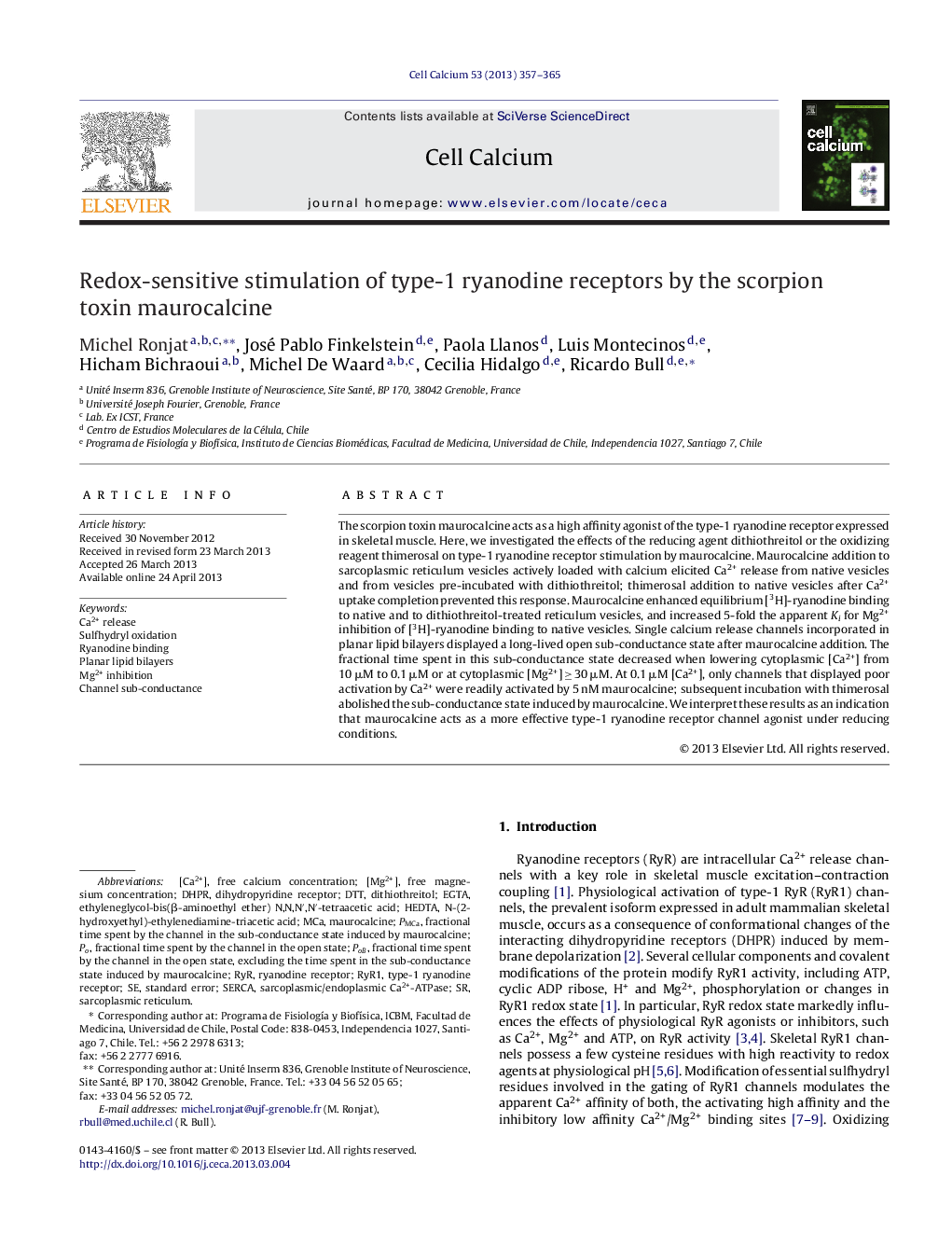| Article ID | Journal | Published Year | Pages | File Type |
|---|---|---|---|---|
| 2165949 | Cell Calcium | 2013 | 9 Pages |
Abstract
The scorpion toxin maurocalcine acts as a high affinity agonist of the type-1 ryanodine receptor expressed in skeletal muscle. Here, we investigated the effects of the reducing agent dithiothreitol or the oxidizing reagent thimerosal on type-1 ryanodine receptor stimulation by maurocalcine. Maurocalcine addition to sarcoplasmic reticulum vesicles actively loaded with calcium elicited Ca2+ release from native vesicles and from vesicles pre-incubated with dithiothreitol; thimerosal addition to native vesicles after Ca2+ uptake completion prevented this response. Maurocalcine enhanced equilibrium [3H]-ryanodine binding to native and to dithiothreitol-treated reticulum vesicles, and increased 5-fold the apparent Ki for Mg2+ inhibition of [3H]-ryanodine binding to native vesicles. Single calcium release channels incorporated in planar lipid bilayers displayed a long-lived open sub-conductance state after maurocalcine addition. The fractional time spent in this sub-conductance state decreased when lowering cytoplasmic [Ca2+] from 10 μM to 0.1 μM or at cytoplasmic [Mg2+] â¥Â 30 μM. At 0.1 μM [Ca2+], only channels that displayed poor activation by Ca2+ were readily activated by 5 nM maurocalcine; subsequent incubation with thimerosal abolished the sub-conductance state induced by maurocalcine. We interpret these results as an indication that maurocalcine acts as a more effective type-1 ryanodine receptor channel agonist under reducing conditions.
Keywords
Related Topics
Life Sciences
Biochemistry, Genetics and Molecular Biology
Cell Biology
Authors
Michel Ronjat, José Pablo Finkelstein, Paola Llanos, Luis Montecinos, Hicham Bichraoui, Michel De Waard, Cecilia Hidalgo, Ricardo Bull,
